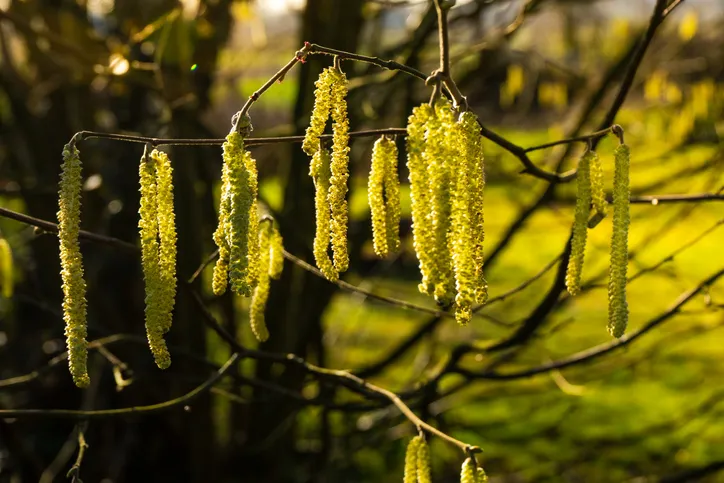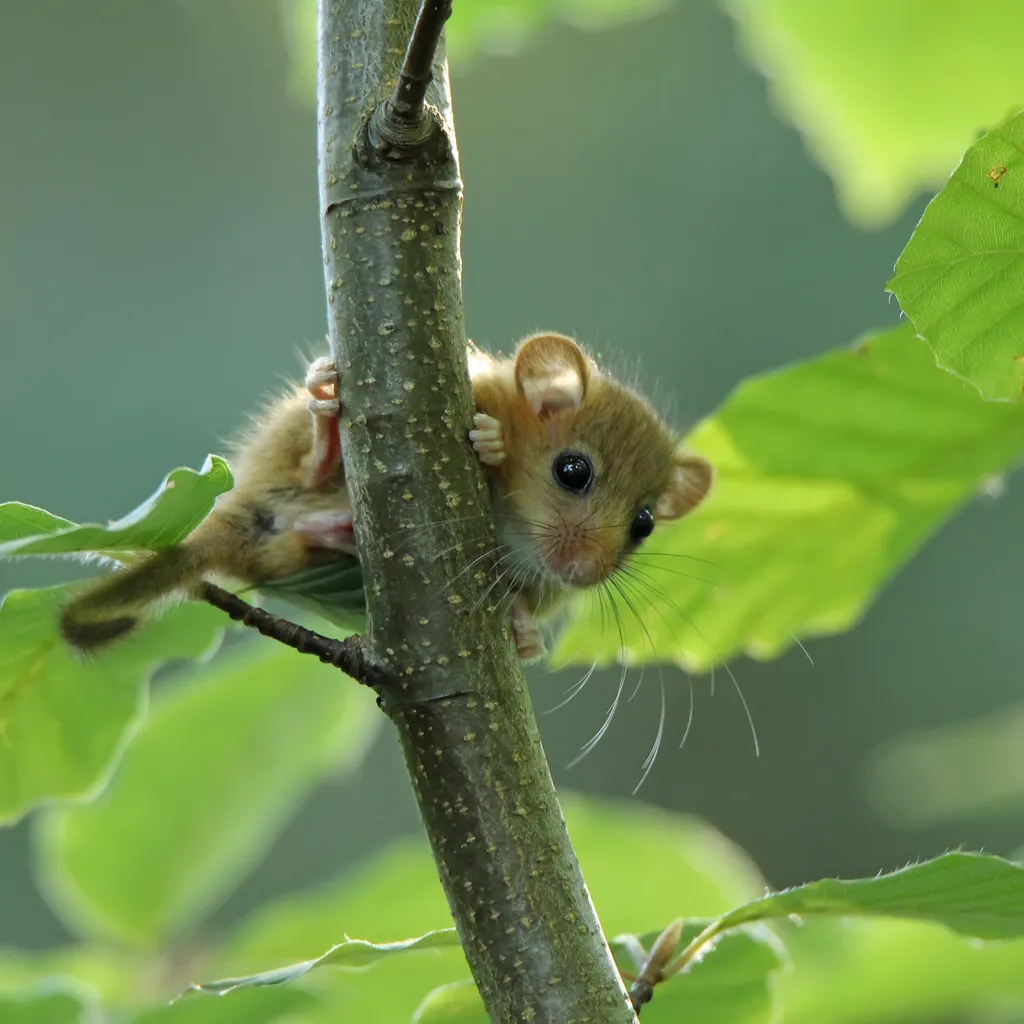A 60-second guide to hazel trees, including what their catkins looks like, how they pollinate, why hazel nuts are important and the art of coppicing.
Hazel catkins
Come February, a soft shimmer of yellow appears in hazel (Corylus avellana) trees and bushes. It is subtle, with shades of wild hibiscus rather than golden daffodil, but still it contrasts sharply with the otherwise denuded branches.
The colour comes from catkins, the male flowers of the hazel, which hang fluffy and limp like the lambs tails by which they are also known. Bees mooch around the branches, slowed by the cold air but collecting precious pollen from the amber spirals.
The hazel doesn’t rely upon the bees for pollination and instead lets the wind scatter its pollen across the small, red-tufted female flowers that are tucked up tight against the twigs and branches. When the sun shines on a breezy winter day, yellow clouds of pollen may billow above a hazel copse.

Hazel nuts
The flowers, once fertilised, will begin the gradual transformation into the nuts with which we are so familiar. Back in the autumn, woodpeckers hammered into the brown shells while dormice nibbled neat holes before gorging themselves ready for hibernation. Other mammals such as squirrels, mice and voles will have cached hazelnuts in log piles or beneath the ground and those that aren’t recovered may germinate to one day form catkins of their own.

Hazel coppicing
Left alone, the hazel may survive for a relatively short 80 years, but coppicing encourages growth for many hundreds more. Upon reaching a diameter of around 7.5cm (3 in), the first trunk is cut back to the stool. Multiple stems then grow that will be coppiced again every 6 to 10 years. These growths are long, straight and incredibly flexible, perfect for the construction of hurdle fencing and useful too for lightweight walking sticks, beanpoles and even rod rests for fishermen.

